It’s a feature that we don’t often think about, but without the four and six-wheel landing gear bogies, we simply wouldn’t have widebody aircraft.
Aviation has now been part of humanity for over 117 years. And while developments have been constant, it wasn’t until WWII that we started seeing large, land-based aircraft. Previously, flying boats showed the way with large aircraft, mainly to avoid the need for large airports. But the war spurred airport development, introducing the first large bombers. And with large land-based aircraft, came large landing gear!
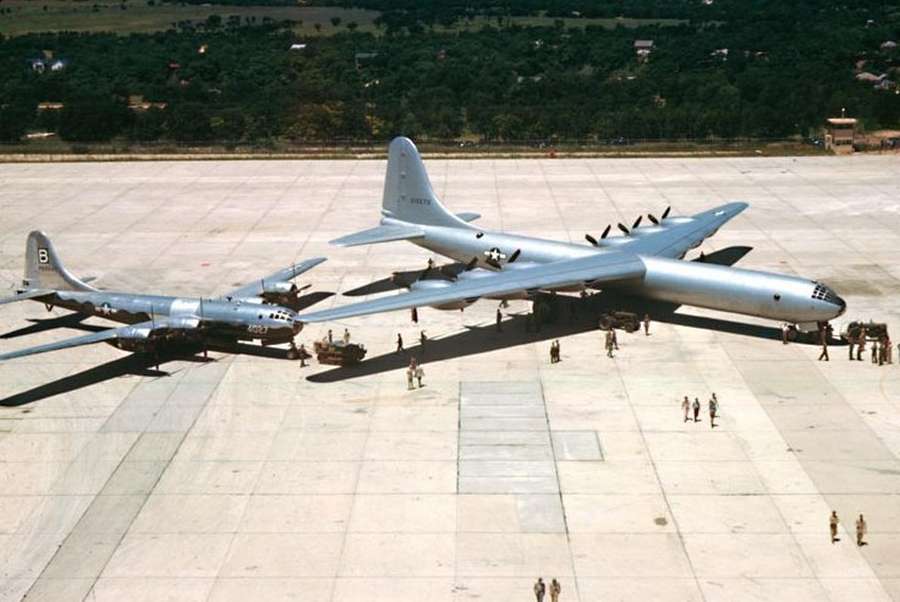
So unsurprisingly, the first aircraft to benefit from landing gear bogies was military. This was what would eventually become the B-36 ‘Peacemaker’. Most readers will know the B-29 ‘Superfortress’, the biggest WWII bomber, that also dropped the two nuclear bombs on Japan. In the picture above, the B-29 is the small one, on the left. It really was very big, but didn’t need or have landing gear bogies. The B-36 on the right, did.
It was a truly ginormous aircraft, earning such nicknames as “the aluminum overcast”. It had a greater wingspan than a 747 – among airliners, only the Airbus A380’s wings are bigger. The plane needed to be so big not only because of its bomb load, but also because aerial refuelling wasn’t practical yet. So it needed super-thick wings, to carry a lot of fuel. The wing even featured a passageway for a flight engineer, to go out and check the engines and (bogie) landing gear in flight!
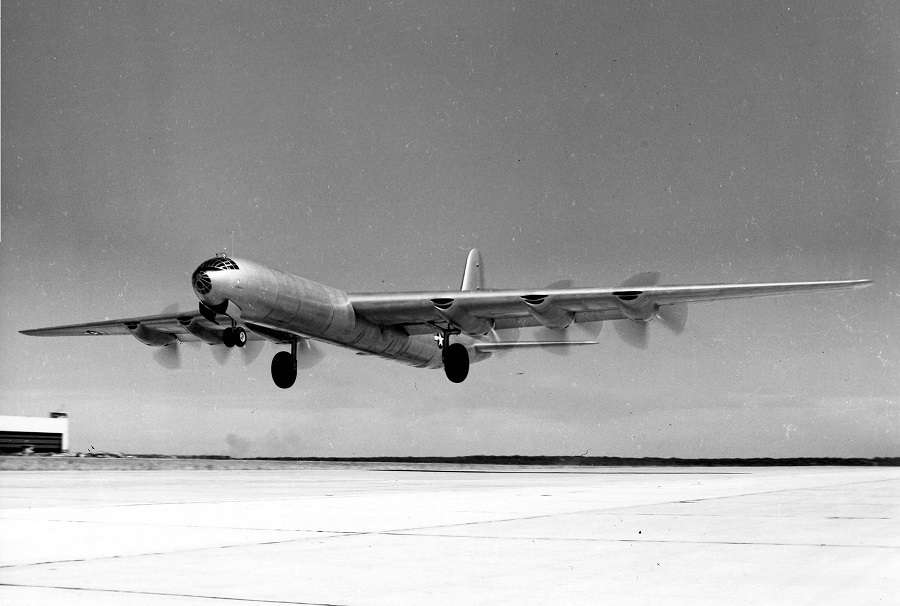
The B-36’s Need For Landing Gear Boogies
But the XB-36 prototype (above) did not have landing gear bogies. It had tricycle gear, with two wheels for the nose gear and one GIANT wheel for each of the mains. The smaller B-29 had double-wheel mains. But making such a pair big-enough to take the weight of the B-36, would not fit properly. So its designers went with a single wheel and tyre for each leg. The tyre was 9’2” (2.79m) high and weighed 1,320 pounds (600kg). That, incidentally, is the gross weight of a US Light Sport aircraft!
But it wasn’t the weight of the tyres that was the problem. The max. take-off weight of the “aluminum overcast” would reach 410,000lbs (186,000kg). Putting most of that weight on two big tyres, had some serious implications. The runways the plane would use, for example, would have to be 22 inches (56cm) thick. Soon, the US Air Force realized that only three bases in the whole country could meet these demands.
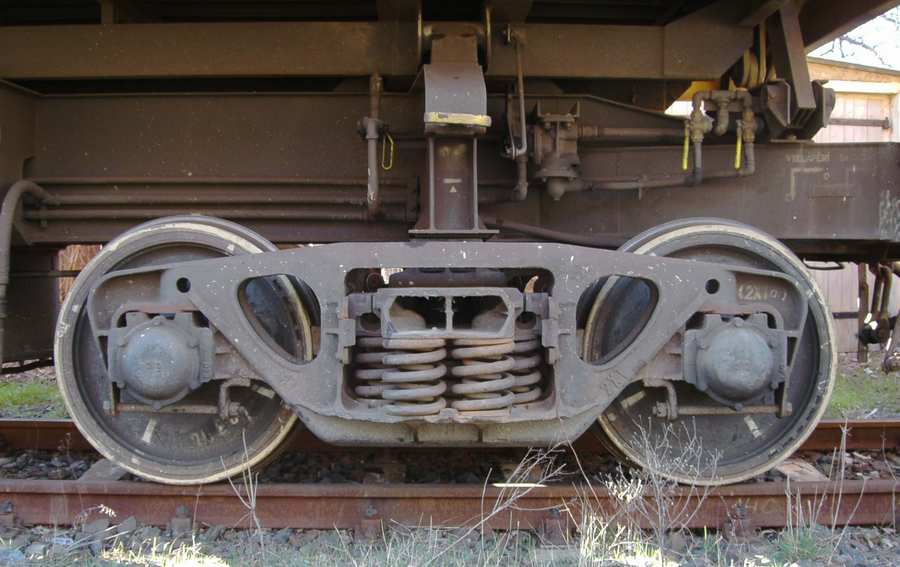
Clearly, something had to change. And to invent the now-ubiquitous landing gear bogie, engineers went to look at something much older and more basic. And heavier, for its size. They looked at trains – ironically, the very thing that aviation replaced, in long-range modern transport. Railway coaches have used bogies from the second half of the 19th century.
Each railway coach would have one bogie chassis (or ‘truck’) at the front and another at the back. The purpose of bogies there, was to allow the wheels to follow track bends more easily. This allowed for tighter turns and reduced wear. The bogie chassis/truck would turn freely left or right. This left-right articulation would find use in some aircraft landing gear bogies – eventually.
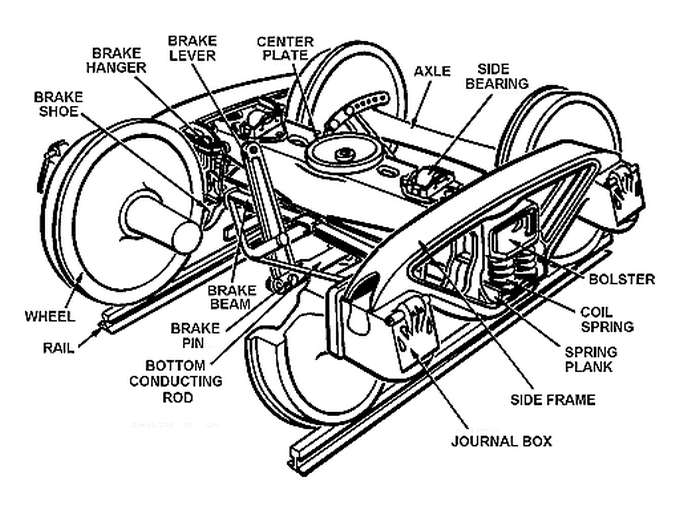
Adoption And Some Famous Imitators
The idea to use train-derived landing gear bogies on the B-36 bomber, is attributed to General Henry H. Arnold. True or not, it was a formal Air Force request that made Consolidated Vultee (later Convair) design the system. Needless to say, it worked. Not only did it succeed in solving the weight-induced ground pressure problems, it also reduced aircraft weight by 1,500lbs (680kg)!
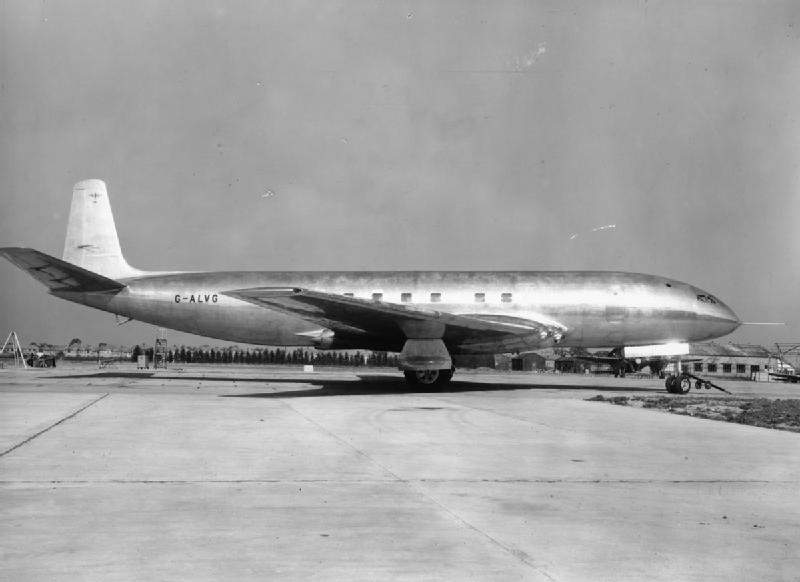
But the effects of this train-inspired military idea on commercial aviation, would last for a very long time. And they would come almost immediately, too. The production B-36, with its bogie landing gear system, first flew in 1948, entering service in 1949. In that same year, another iconic aviation legend flew for the first time: the de Havilland Comet.
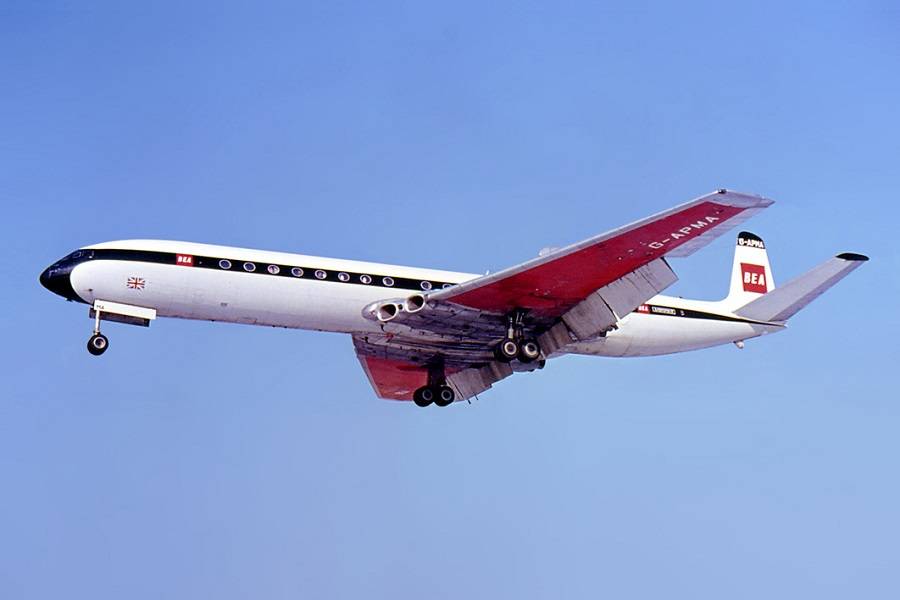
The first two prototypes of the Comet featured tricycle gear, with one large wheel for each of the mains. But the first production aircraft (1951) had four-wheel landing gear bogies. The French Sud Aviation Caravelle (first flight 1955) licensed many of the Comet’s features, including the landing gear. Then the Boeing 367-80 adopted the same feature. This jet soon developed into the 707. And the rest, as they say, is history.
Today, practically all twin-aisle and even some single aisle airliners feature four or six-wheel landing gear bogies. Larger jets, like the 747 and the A380, have more than two main gear legs, with one bogie each. Obviously the bigger the jet, the more wheels manufacturers use. This is governed by specifications for maximum pressure on runways, taxiways and aprons. The supersonic Tupolev Tu-144 deserves special mention here, since it featured bogies with eight wheels!
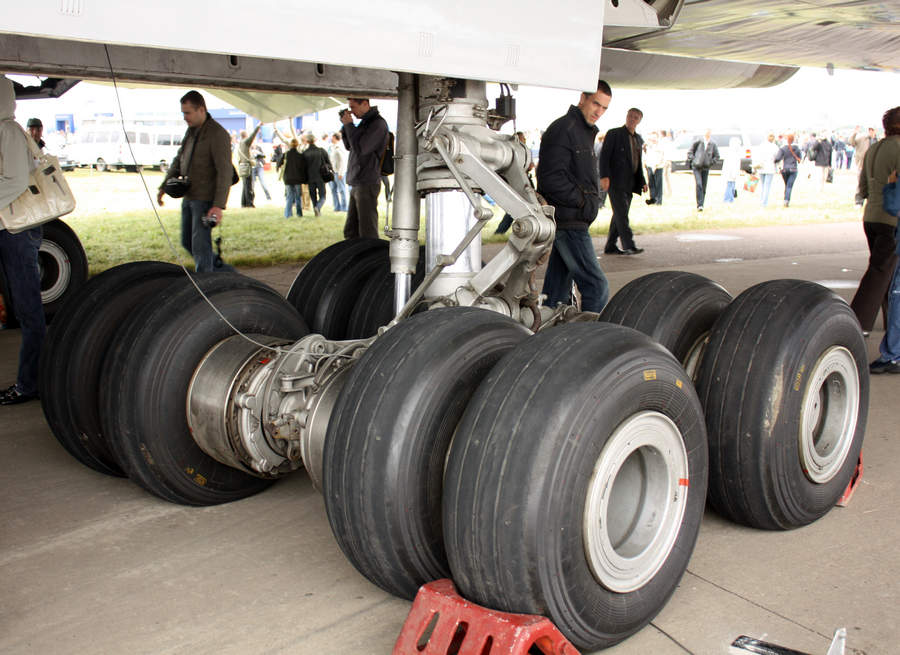
Smaller Planes With Landing Gear Bogies
Among single-aisle jets, the Boeing 757 has two four-wheel landing gear bogies. Whenever possible, designers of smaller jets avoid multiple wheels and brakes, because they add complexity and weight. But sometimes, other factors come into play. Airbus actually made some A320-200s with four-wheel bogies, for Indian Airlines (now Air India). This was to enable these aircraft to operate in poor runway conditions.
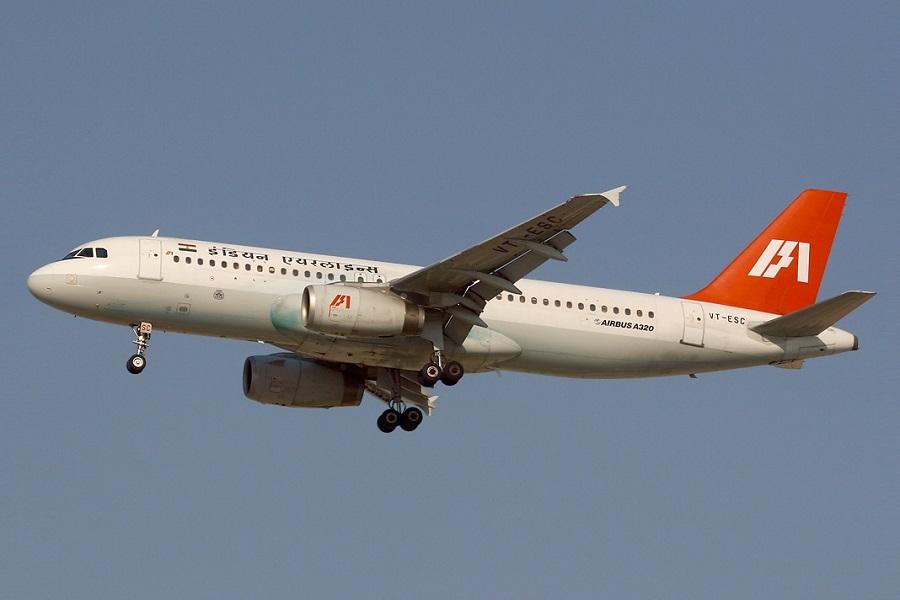
Airbus only made about 30 A320s with four-wheel bogie landing gear. The weight penalty likely kept other customers from ordering more. But as we saw, Airbus are contemplating the development of a stretched (and heavier) A322neo. Moving the pivot point of the landing gear rearwards, could be necessary in these jets. So, four-wheel bogies, that can also handle the extra weight, could feature in the landing gear of such an aircraft. And handily, Airbus already have the design!
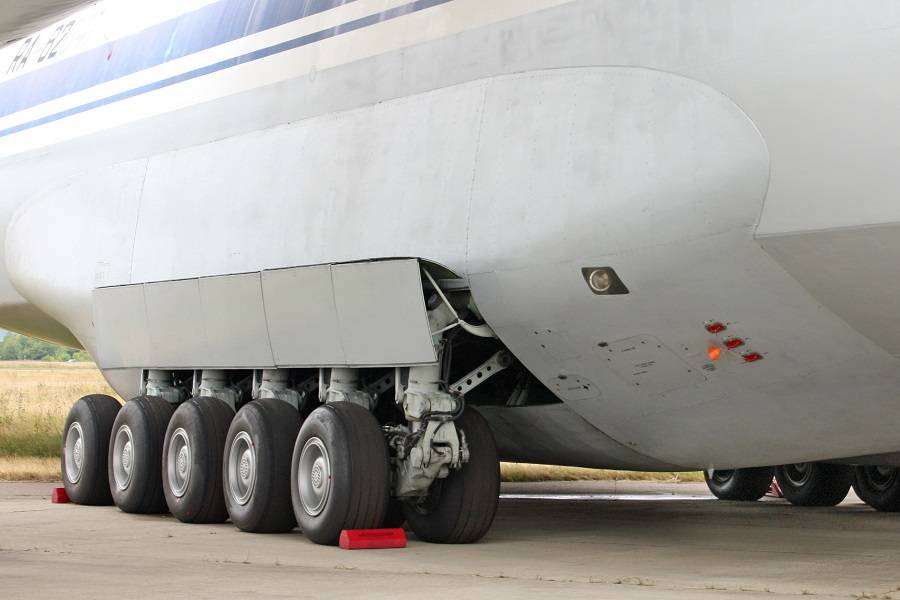
There are also cargo aircraft, big and small, with multi-wheel landing gear systems that don’t use bogies. These include the C-130 and on the bigger end, the Antonov An-124 and An-225. These aircraft use pontoon-style gear, which needs less space in the fuselage. This is important, because these low-slung aircraft need to leave as much fuselage room free for cargo, as possible. And since they are high-wing designs, the gear can’t retract into the wings.
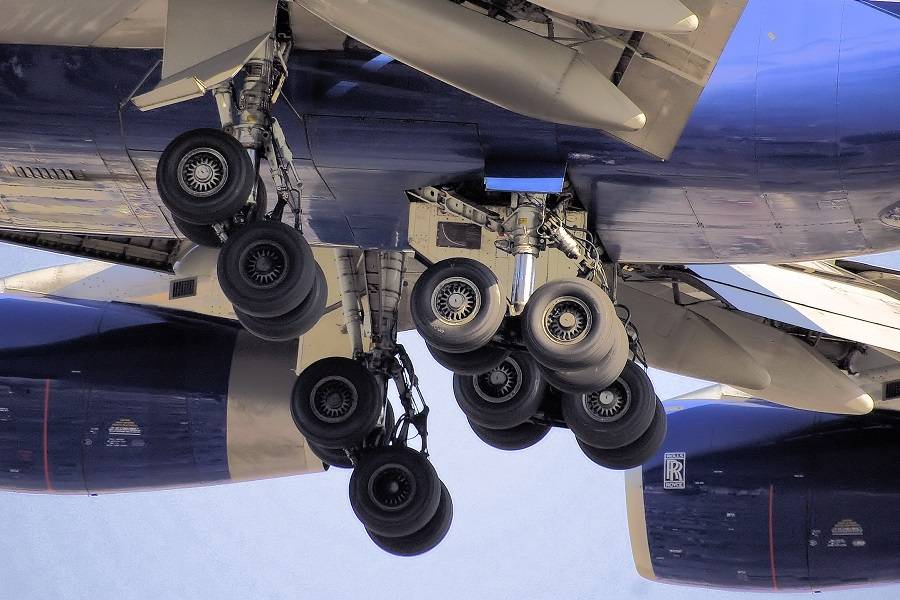
We often see large, complicated machines, like aircraft, and don’t appreciate their many details. Landing gear, with or without bogies, are not hidden away, and yet we don’t think of their origin or history. That they came from trains certainly isn’t obvious, is it?




3 comments
Darío Tavera
Outstanding article. I really enjoyed it! Thanks for sharing.
Steve Worral
Excellent article. Thanks for sharing that history.
Spyros
Thank you!